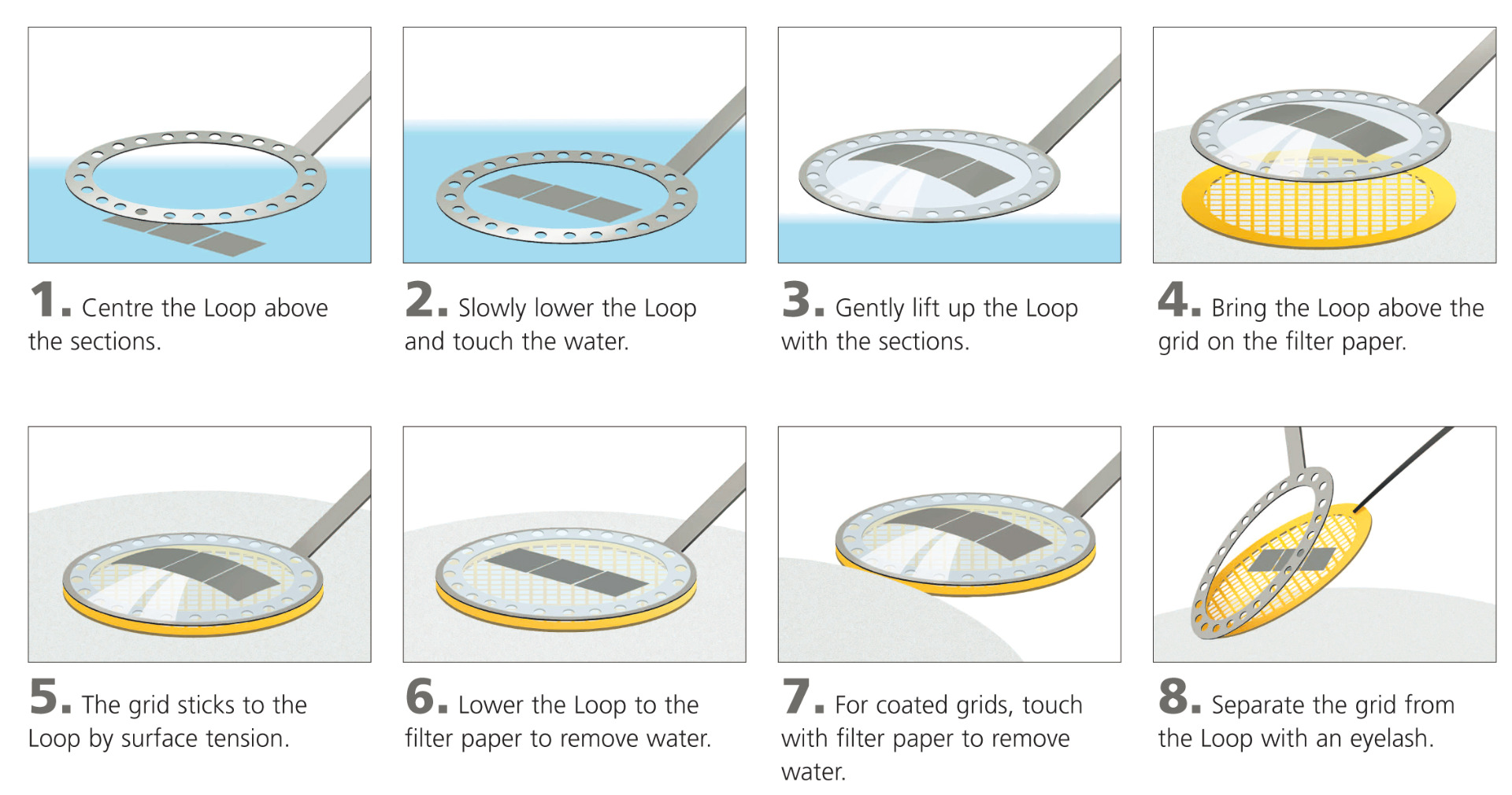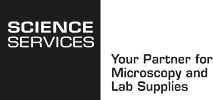Technical Tips
| Grids: Shiny Side vs Dull Side? |
|
Retention of sections on grids during poststaining and immunocytochemical procedures frequently is of crucial importance in the electron microscopy laboratory. Opinions differ regarding the side of grids most suitable for permanent adhesion. The controversy is easily solved by examination of the surfaces involved. Grids are manufactured with a dull/rough side, and a shiny/smooth side. For the most secure adhesion of sections to grids sections should be picked up on the rough side of the grid. Reference: For film casting of grids with e.g. Formvar or carbon, the smooth/shiny side should be used. |
| Grids: Removing a Charge from the Surface of Grids |
|
Sometimes when you are trying to pick up sections, they won’t adhere to the grid surface. If you don’t have time to glow discharge clean the grid surfaces, try this little trick. Dip the grids in distilled water for a moment and wick off the excess with filter paper. Let them dry while you are arranging your sections. Your sections should now adhere to the grid surface. Some labs soak the grids they will use for the day in distilled water until they are needed. If this procedure fails, reclean your grids with acetone or chloroform or glow discharge clean the grid surfaces. Reference: |
| On-Grid Enhancement |
| The use of nickel grids is recommended for on-grid enhancement, as nickel is relatively insensitive to silver enhancement. Gold or copper grids should not be used. |
| Reaction of Ni and Cu Grids |
|
How do Nickel and Copper Grids React with Periodic Acid? Periodic Acid + Ni → Ni-Periodate + H2 In this case you should use Gold Grids. |
| Picking Up of Carbon Film |
|
The Preparation of Adhesive Coated Grids for Picking Up Carbon Film to Make Carbon Coated Grids The following steps should be followed in the preparation of adhesive coated grids:
|
| A Simple Method for Handling Grids |
|
A simplified method for handling EM grids is described. This new method not only offers safety and identification of your samples but offers you improved handling, temporary storage, and identification of grids bearing ultrathin sections as well as a novel method for preparing bulk samples. Reference: |
| Section Pick-up with `The Perfect Loop` |
| The Perfect Loop (# E70944) allows you to pick up sections consistently without causing any damage to the sections. It is the only loop that is currently available where the outside diameter of the loop is the same as the grid and the inside diameter is slightly larger than the observation area of the electron microscope. The thickness is about 40 microns. Due to the fact that the loop and the grid are of the same diameter they are attracted to one another when in water and attach together through the surface tension of the water. Even if the section touches the inside of the grid during blotting the touching area is minor and, therefore, the section is not damaged. When the grid is removed from the loop the section remains in place without fail. The area equals the observation field (about 2mm diameter) of the electron microscope; thus pieces can be fully observed. |




